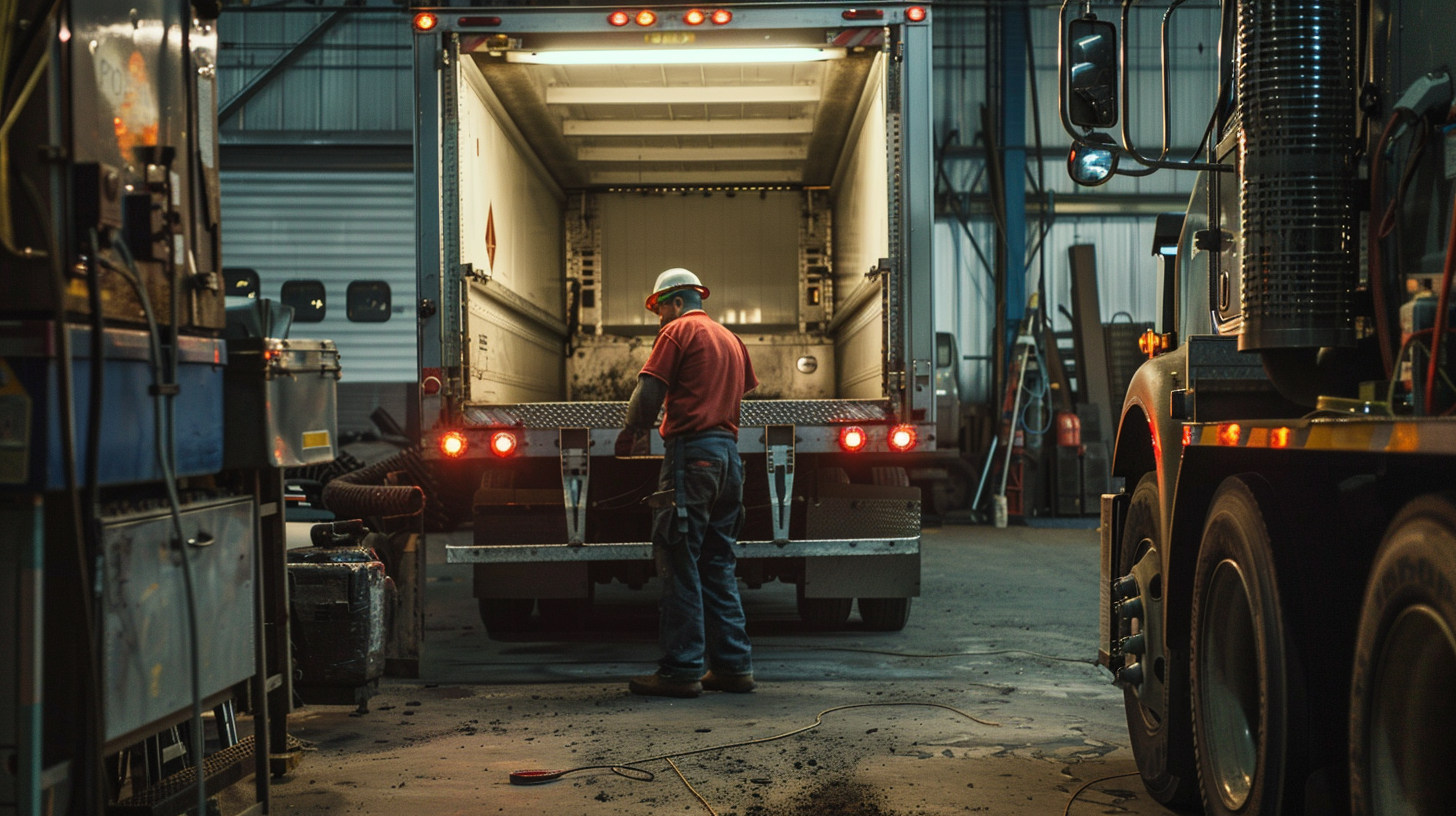Need help? We're here!
(888) 312-8812 Login SignupMust-Have Emergency Equipment for Professional Truck Drivers
October 15, 2025

You’re two hours into a night haul, halfway through a dusty backroad, and your rig grinds to a stop. It’s not tire trouble or fuel—it’s a faulty battery cable, and there’s no cell service. You pop the cab and realize you didn’t pack the jumper cables you meant to grab. Now you sit idle, waiting for a tow, with a clock ticking and a late delivery on your back. Scenarios like this are more common than most want to admit, especially when time pressures and long days push safety prep to the bottom of the list.
Emergencies happen when you least expect them. A breakdown in the middle of nowhere, a weather shift on an open stretch, or even a minor injury at a rest stop can all turn into major problems if you're not ready. That’s why carrying the right emergency gear isn’t just smart—it’s a basic part of staying safe, keeping your rig rolling, and protecting your load. Truck drivers rely on more than just their skills behind the wheel. Having a solid emergency setup on board makes a big difference when it matters most. Let's walk through the gear that should always be riding shotgun.
Emergency Roadside Kit Essentials
When something goes sideways on the road, you don’t want to come up empty-handed. A solid roadside emergency kit keeps you ready for breakdowns, small repairs, or unexpected detours.
Here’s a breakdown of what should be in every cab:
- Jumper cables or a lithium jump starter for dead batteries
- A tire repair kit with plugs, patches, and a portable air compressor
- Reflective warning triangles and flares to alert other drivers
- A basic tool kit including screwdrivers, pliers, adjustable wrench, and duct tape
- Heavy-duty gloves and flashlight with extra batteries
These aren’t luxury items. They’re what you’ll reach for when the truck won’t start, a hose comes loose, or you're popped on the shoulder with a flat. You don’t need a mobile repair shop in your sleeper, just the right basics to patch things up until you can get back to a shop.
Even something as simple as having a flashlight can be the difference between a quick fix and getting sidelined overnight. It’s easier to prep on your own terms than scramble when things go sideways. Keep the gear stashed in an easy-to-reach place, and check it often to make sure nothing’s missing or worn out.
Health And Safety Supplies
Accidents, whether big or small, can happen fast. Even a slip getting out of the cab or a bad cut from handling sharp metal can turn serious if you’re not prepared. That’s why pros don’t just stack parts and tools—they also keep safety gear on board.
Start with:
- A fully stocked first-aid kit that includes bandages, antiseptic wipes, gauze, gloves, and burn cream
- High-visibility safety vests and headlamps for roadside work
- Extra water and non-perishable food in case you’re stuck for long hours
- Basic hygiene gear like hand sanitizer, baby wipes, and waste bags
- Prescription meds, if you take any, plus a small backup supply just in case
Keep the first-aid kit updated. Supplies expire or run out over time, and it’s easy to forget to refill after using something. As for food and water, you don’t need a week’s supply. A few bottles and some high-energy snacks will go a long way if you’re stuck without help.
Think about what you'd appreciate having if you got stranded for a day. Sometimes you’re not just waiting on roadside repair but stuck in heat or cold for hours with nothing around you. Staying healthy and clear-headed makes it easier to deal with anything that comes your way. It may seem like an afterthought but having this gear stocked prevents minor incidents from turning into much bigger headaches.
Communication And Navigation Tools
When you're out on the road, communication is your lifeline. Getting stranded with no way to call for help or look up your route takes a bad situation and makes it worse. That's why every truck cab should be stocked with a few reliable tools that keep you connected and on track.
Start with a fully charged cell phone and a car charger or power bank. If you’re running cross-country, especially through remote areas, don’t count on cell service holding up. A two-way radio or CB radio can be a solid backup. These let you get in touch with nearby drivers or emergency services even when your phone can’t get a signal.
Alongside those, keep a printed list of emergency contacts. Include numbers for your dispatcher, roadside assistance providers, and a few local shops along your regular routes. It seems old-school, but it works when tech fails.
For navigation, a GPS unit that's updated regularly is still your best bet. Relying on your phone's map app is fine until you lose data in the middle of nowhere. A truck-specific GPS can also route you around low overpasses or restricted roads, saving your trailer and your time. Folding maps of your major routes are worth stashing in your glove box too. They’re not flashy, but they won’t quit when your screen does.
Here’s a quick checklist:
- Cell phone and backup power supply
- CB radio or two-way radio
- Truck-smart GPS with updated maps
- Emergency contact sheet
- Printed road atlas or foldable state maps
These tools aren’t about convenience. They give you a backup plan when tech fails or weather cuts off your signal. Whether you’re dealing with a breakdown or an unexpected detour, staying connected and informed helps you get through it without adding stress to the situation.
Seasonal And Weather-Specific Equipment
Weather can flip fast, and the right gear for the season can make a rough day more manageable. No one wants to be sweating through 100-degree heat on the side of the highway or digging out a rig buried in snow without the right tools.
In winter, keep gear that helps you stay warm, visible, and able to keep moving even when roads get slick:
- Heavy-duty snow chains for tires
- Ice scraper and de-icing spray
- Thermal blankets and insulated gloves
- Windshield washer fluid rated for low temps
- Backup socks, hats, and layers in a dry bag
Mudflaps and anti-spray flaps are also good in heavy snow zones to keep ice and slush from building up in key areas under the truck. If you're headed into mountain country or northern states, having traction mats can shave off a lot of digging time if you’re stuck.
During summer, your top risk is overheating. Pack items that help keep you and your cab cool:
- Windshield sunshade and extra coolant
- Bottled water and electrolyte drink packs
- Cooling towels that can drop your body temp fast
- Wide-brimmed hat or extra cab visor
- UV-protection sunglasses
- Bug spray and sunscreen
If you're trying to sleep in your cab without the AC running, a portable fan that connects to a separate battery can make a massive difference. Summer shutdowns on hot blacktop are unforgiving, but having the tools onboard makes it manageable.
Wherever you're headed, think two steps ahead of the weather. Leaving Phoenix in a t-shirt might be fine, but running into a late-spring storm in the Utah mountains makes that decision a cold one. That thermal blanket your buddy laughed at? Suddenly that’s the smartest thing you packed.
Be Ready When It Counts
Emergencies don’t run on a schedule. You don’t get a heads-up before your battery fails in the dead of night or a snowstorm parks you on a pass. That’s why having the right emergency gear isn’t extra—it’s just part of being prepared.
The key isn’t overpacking or turning your sleeper into a mobile warehouse. It’s about knowing what gear solves the most common breakdowns, delays, or weather problems and making sure it’s onboard, easy to grab, and in good condition.
This kind of preparation turns rough days into minor delays. It keeps you safer, protects your equipment, and gives you the chance to handle things without scrambling. Every experienced driver knows the road will throw surprises your way. But when your gear’s ready to go, so are you.
Make sure you're ready for anything the road throws your way by equipping your truck with all the right gear. For those looking to stay ahead of the game with top-quality heavy-duty parts for trucks, check out our trusted selection. FinditParts Inc. is here to support your journey with the parts and gear that keep you moving.



